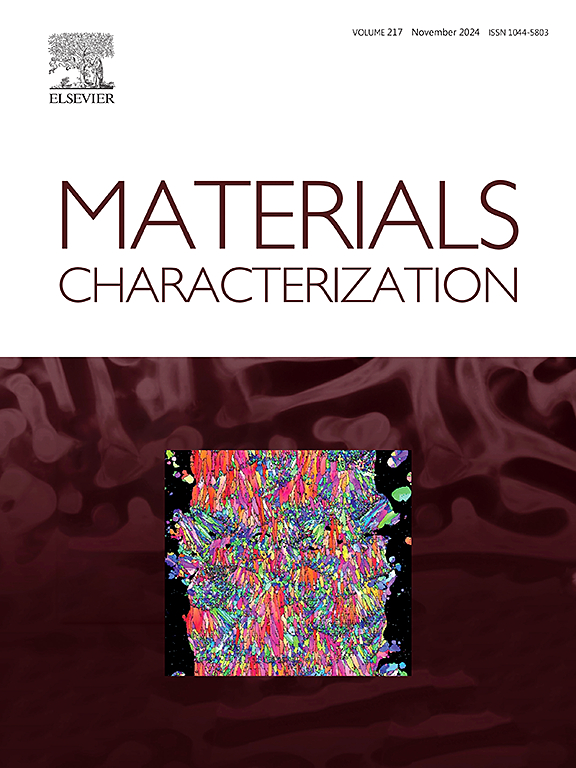添加剂搅拌摩擦沉积制备不同时效Al-Zn-Mg-Cu合金的显微组织和腐蚀行为分析
IF 4.8
2区 材料科学
Q1 MATERIALS SCIENCE, CHARACTERIZATION & TESTING
引用次数: 0
摘要
研究了添加剂搅拌摩擦沉积(AFSD)制备的Al-Zn-Mg-Cu合金经过不同热处理后的显微组织和腐蚀行为。AFSD合金由均匀的动态再结晶等轴晶粒(<5.5 um)组成,没有缺陷和分层。AFSD工艺的搅拌作用可以使BM中的大相破碎,提高其耐蚀性。AFSD合金在120℃人工时效8 h后析出小尺寸η′相,提高了合金的力学性能(486 MPa,伸长率4.74%),但合金中存在大量被PFZ包围的大尺寸T相和η相,耐蚀性较低。经固溶处理和人工时效处理的AFSD合金具有许多细小的η相,具有较低的膜电容值,增加了点蚀和抗IGC能力。但合金在固溶过程中发生晶粒长大和晶界迁移,导致PFZ缺失,塑性较低。本文章由计算机程序翻译,如有差异,请以英文原文为准。
The microstructure and corrosion behavior analysis of different aging Al-Zn-Mg-Cu alloys manufactured by additive friction stir deposition
The microstructure and corrosion behavior of Al-Zn-Mg-Cu alloys prepared by additive friction stir deposition (AFSD) after different heat treatments were studied. The AFSD alloy consists of uniform dynamically recrystallised equiaxed grains (<5.5 um), devoid of defects and delamination. The stirring effect of the AFSD process can break up large phases in the BM and improve the corrosion resistance. AFSD alloys can precipitate small-sized η’ phases under artificial aging at 120 °C for 8 h. This process can enhance the mechanical properties (486 MPa, elongation 4.74 %), and the alloy has many large-sized T and η phases which surrounded by PFZ, resulting in low corrosion resistance. The AFSD alloy after solution treatment and artificial aging have many fine η’ phase with low film capacitance value, which increases pitting and IGC resistance. But the alloys underwent grain growth and grain boundary migration during the solid solution process, resulting in the absence of PFZ and low plasticity.
求助全文
通过发布文献求助,成功后即可免费获取论文全文。
去求助
来源期刊

Materials Characterization
工程技术-材料科学:表征与测试
CiteScore
7.60
自引率
8.50%
发文量
746
审稿时长
36 days
期刊介绍:
Materials Characterization features original articles and state-of-the-art reviews on theoretical and practical aspects of the structure and behaviour of materials.
The Journal focuses on all characterization techniques, including all forms of microscopy (light, electron, acoustic, etc.,) and analysis (especially microanalysis and surface analytical techniques). Developments in both this wide range of techniques and their application to the quantification of the microstructure of materials are essential facets of the Journal.
The Journal provides the Materials Scientist/Engineer with up-to-date information on many types of materials with an underlying theme of explaining the behavior of materials using novel approaches. Materials covered by the journal include:
Metals & Alloys
Ceramics
Nanomaterials
Biomedical materials
Optical materials
Composites
Natural Materials.
 求助内容:
求助内容: 应助结果提醒方式:
应助结果提醒方式:


